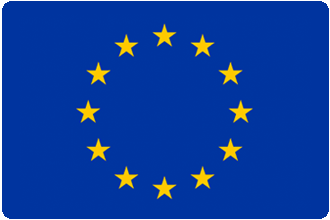Germanium (Ge) is a lustrous, grey-white metalloid that is indispensable in high-performance optical systems, particularly in the fields of aerospace and defence. Its unparalleled infrared (IR) transmission and high refractive index make it the material of choice for thermal imaging, surveillance and navigational technologies that are mission-critical for modern scientific and military operations.
What is Germanium?
Germanium is transparent in the infrared region, particularly within the 2–14 µm wavelength band, making it perfect for mid-wave infrared (MWIR) and long-wave infrared (LWIR) applications. Its high refractive index of approximately 4.0 in the IR range allows for compact optical designs with minimal lens thickness — a key advantage in aerospace platforms where space and weight are at a premium.
Its ability to withstand mechanical stress, combined with its thermal conductivity and compatibility with durable anti-reflective and diamond-like carbon (DLC) coatings, makes germanium an ideal candidate for use in harsh and dynamic environments, from high-altitude drones to ground-based military vehicles.
Applications in Aerospace Systems
Infrared Imaging in Satellites and Spacecraft
Germanium is a key material in aerospace, particularly in infrared imaging payloads on Earth-observing satellites. These systems rely on IR optics to capture thermal emissions from the planet’s surface. They are used to monitor ocean temperatures, detect wildfires and assess agricultural health. Satellite sensors incorporating germanium optics discern subtle temperature variations across large landmasses, providing valuable data for climate research and disaster response.
In planetary exploration missions, germanium lenses are vital in IR spectrometers, analysing the surface composition of celestial bodies. These instruments detect water ice, minerals, or volcanic activity by interpreting infrared signatures, aiding our understanding of the geological and atmospheric history of planets such as Mars.
Heat Management and IR Navigation
Germanium is a key component of thermal management systems in spacecraft, where it ensures precise non-contact temperature measurement and regulation. In autonomous systems — including orbital platforms and high-altitude UAVs — IR-based navigation systems using germanium optics enable precise positioning in low-visibility conditions, where traditional optical sensors fail.
Defence Applications of Germanium Optics
Thermal Imaging and Night Vision Systems
Thermal imaging is now an essential part of modern defence and germanium is key to this development. Infantry units, armoured vehicles and aerial reconnaissance platforms use thermal cameras with germanium lenses to detect heat signatures in total darkness or through obscurants like smoke and fog.
During search and rescue operations, handheld thermal devices using germanium optics can identify the body heat of survivors trapped beneath rubble or lost in wilderness areas — scenarios where visible light imaging would be ineffective.
Target Acquisition and Missile Guidance
High-precision targeting systems, such as aircraft-mounted targeting pods and guided missile seekers, use germanium domes and optics to detect and lock on to targets based on their infrared emissions. A missile equipped with a germanium optical dome can home in on the heat signature of a moving vehicle or aircraft engine, even through adverse weather conditions or camouflage.
These systems operate in high-speed, high-temperature environments, so germanium components are coated with DLC to enhance durability and transmission while resisting abrasion and chemical wear.
Countermeasures and Range Finding
Germanium is vital for infrared laser range finders used to measure distance on the battlefield. These systems are vital for accurate target range determination, which is essential for ballistic calculations and fire control systems.
Infrared countermeasure systems, designed to detect and disable incoming threats like heat-seeking missiles, also rely on germanium lenses. These lenses detect the IR signature of approaching projectiles in time to deploy flares or activate directional jamming.
Engineering Considerations
Notwithstanding the numerous advantages inherent in germanium, this material does pose several engineering challenges. Notably, its transmission characteristics degrade at elevated temperatures. While germanium performs reliably below 100°C, sustained exposure above this range leads to increased absorption and at around 200–300°C, transmission can degrade rapidly to the point of failure. Consequently, the implementation of optical systems utilising germanium necessitates meticulous engineering to ensure effective thermal management.
Additionally, the relatively high density (5.32 g/cm³) of germanium can impose limitations in weight-sensitive applications, such as small satellite payloads. It is incumbent upon optical designers to judiciously balance these considerations against performance gains, considering factors such as lens thickness, field of view and coating efficiency.
Advancements in Coatings and Custom Fabrication
To enhance the performance of germanium optics, especially in demanding field conditions, anti-reflective coatings are applied — typically using materials such as ZnS or DLC. These coatings have been shown to reduce reflectance from over 36% (uncoated) to less than 1%, thereby significantly improving transmission and contrast in optical systems.
Leading manufacturers, including UQG Optics, offer custom-fabricated germanium components, ranging from flat windows to precision curved lenses, in sizes tailored for everything from compact UAV payloads to large-scale defence platforms.
Final thoughts
Germanium’s infrared transparency, mechanical robustness and compatibility with protective coatings make it an irreplaceable material in advanced optical engineering, whether in the aerospace or defence sectors. From the guidance of satellites across the cosmos to the enablement of soldiers to see in total darkness, the utilisation of germanium optics continues to deliver clarity and precision in the most critical situations.
As next-generation aerospace and defence systems continue to push the boundaries of performance in complex environments, the strategic value of germanium is set to increase. Its role as a cornerstone of infrared technology remains critical and highly relevant to the scientific and defence communities alike.
Next steps
To find out more about Germanium Windows from UQG Optics, or any of our optical windows call us on 01223 420329 or email our sales team at info@uqgoptics.com.




